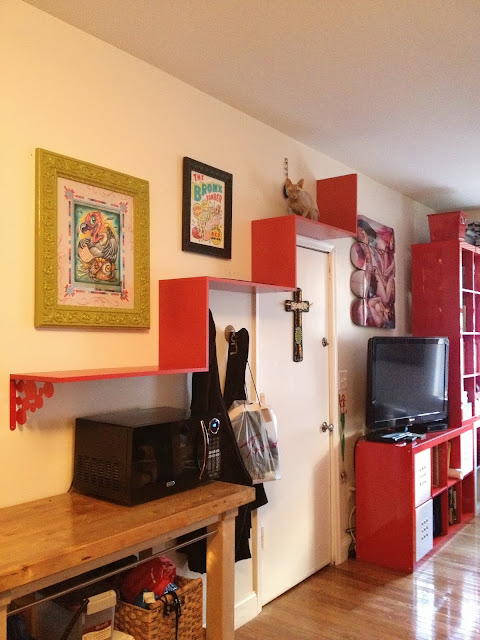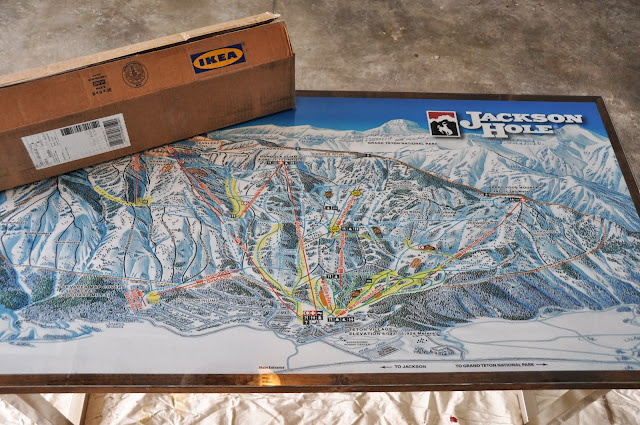
Materials: Borrby lantern, some wood and various odds and ends
Description: From another project I was left with an old and very beat-up mechanical clockwork. Because I like seeing a clockwork at work, I started looking for something that might function as a display case. The smaller Borrby lantern is inexpensive and seemed well-suited to my purpose.
Note: the galvanized version of the Borrby is constructed differently and I don't think it would work for this hack.
I bought two, because I couldn't find a single one without scratches on the glass (Hey Ikea, Borrbys are not adequately packed, they're just placed together in a box without any separation or protection between them). I ended up using 5 glass panels; one for the top as well.

First I removed all the glass panels. Then I pried off the top section of the lantern and sawed off the 4 supports flush with the bottom. I turned the lantern upside-down (so the top became the bottom). I fastened the top (now bottom) to a leftover piece of oak board - because the metal is thin and became a little deformed, I used brass L-brackets to clamp the metal down to the board (the brass echoes the clockwork metal). I was intending to put brass corners around the top too, but that didn't look like it would work out when I got to it (the screws would have ended up going through the glass).
The vent holes were covered up with leftover pieces of a LOBBO lampshade. Brass plate would have been nicer but I didn't find any.
The top cover is made of two overlapping L-shaped pieces sawn from what was originally the bottom of the lantern. These I glued together and re-painted black. The top is held in place by double-sided construction tape, In case I need to take it apart again.
I cut a glass panel to size for the top. I'm not very good at cutting glass, so starting from the panels of another Borrby limited the number of cuts I needed to make. Also, 3 chances to get it right...
My spare lantern is now missing its back glass panel, I intend to put a reflecting piece of metal in its place (perhaps cut from a cookies box) and turn it into a semi-directional lantern.
~ Eli, Belgium


















































